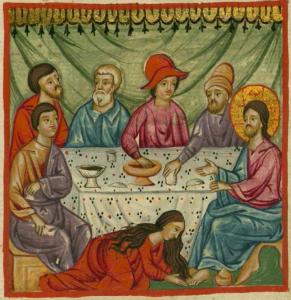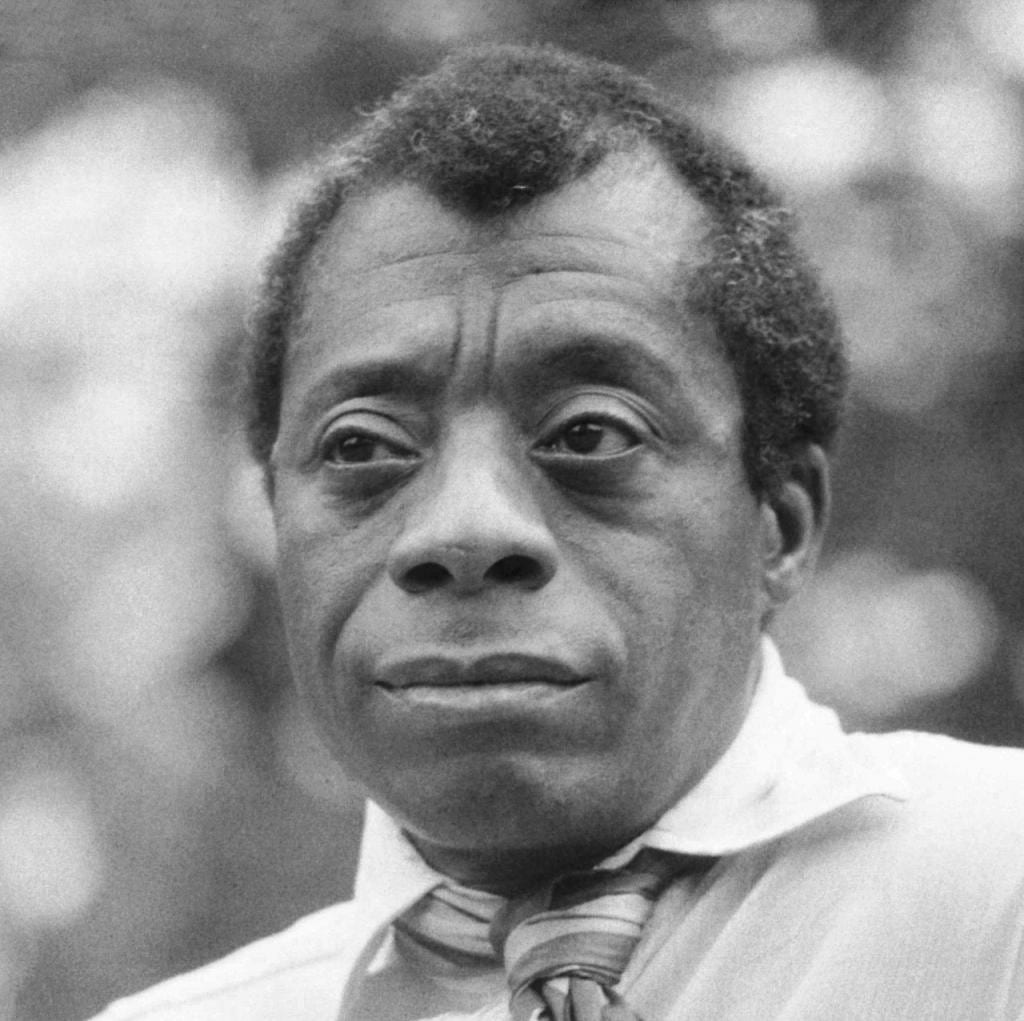John 12:1-8
Mary’s anointing of Jesus’s feet with oil is slightly embarrassing. The sheer emotion of the scene is overpowering. There’s the oil, the hair, the feet, and the raw vulnerability.
Jesus is eating dinner in Bethany, close to Jerusalem, at his dear friends Mary, Martha, and Lazarus’s house. It should not be lost on biblical readers that Lazarus is there having a glass of wine reclining at table. Lazarus, just a chapter ago in John’s gospel, was dead in a tomb. Martha, Mary and their Jewish community were grieving. Jesus had inexplicably lingered in his travels, and his friend Lazarus had died. Both sisters tell Jesus, “If you have been here, my brother would not have died.” As if to say, “Jesus, where were you?” And here is Lazarus, newly resuscitated, eating a meal.
For Jesus in John’s gospel, this is the beginning of the end. Or, if you believe, as the gospels affirm, in the universal cycle of life and death, crucifixion and resurrection together, this is the beginning of the end that is also a new beginning.
Jesus’s raising of Lazarus caused a stir. There was no Facebook live, no aggressive journalists to show up on the scene, but, like gossip in a small town, word gets around. Many trusted Jesus after this dramatic act. Many people affirmed that new possibilities emerge through his presence and mission.
Many, of course, did not. The Temple leaders – the political, religious elites, called an emergency meeting. “What are we accomplishing?” they said. “If we let the movement survive, it will only grow, and the Romans will come and take away our temple and nation.” The movement is too hot to handle. It inevitably calls into question the authority and primacy of Rome’s power, and the Temple leaders have built their careers and lives entangled with Rome’s domination. The high priest himself says what everyone else is thinking: “It’s better for one person to die than for all of us.” (John 11:47-53)
This is the myth of redemptive violence: Jesus is a threat. He must be disposed of. His death will save us.
Jesus returns to Bethany undercover, at risk to his life, and undoubtedly knowing where the political plot is headed. This is the beginning of the end, or if you affirm, as the gospels do, the unity of death and resurrection, the beginning of the end which is itself a new beginning.
John’s passion narrative starts here. There is no storming of the temple at the end of John’s gospel, no overthrowing moneychangers, no dramatic nonviolent direct action. Only this. A raised body. A life–Lazarus’s life–given a little more time. A life–Jesus’s life–nearing the end of his time.
It’s a bit embarrassing, really. Like when someone’s grief or joy completely overtakes them at a dinner party, or for that matter, at church, and the rest don’t know to respond. The person’s guttural freedom is vulnerable and on a higher emotional frequency than usual social or worship conventions typically allow. It’s the frequency of love, and devotion, and grief, all bound up in one.

Mary’s anointing is raw, vulnerable, and frankly erotic. Mary blatantly disregards gender norms: she wipes Jesus’s feet with her hair. Oil is pouring over the floor, running over Jesus’s toes, trickling down Mary’s neck. The scent is filling the entire house.
What’s it all about, anyway? At first, readers are not clear, and the dinner guests themselves are confused. Judas makes a fair point: “Why wasn’t this perfume sold and the money given to the poor?” (John 12:5) He’s saying, “We did not budget for this. This is an extravagant, unneeded expense.”
Anointing with oil is typically a ritual fit for a king. An anointing often takes place in the Hebrew Bible to declare God’s choice of the new ruler—picture prophet Samuel pouring oil over a young David’s head (1 Samuel 16:1-13). What’s more is that anointing typically involves the head, not the feet. Mary is up to something different, although we can hear the royal associations ringing in the background: Jesus, the new king; Jesus the Christ, which means the “anointed one.” Jesus, the Christ who will anoint, or reveal all reality as holy.
John’s Jesus tells the hearers what it is about. “This is about my death,” Jesus says, “Leave her alone.” Perhaps the guests are on the offensive because of the unnerving intimacy of the scene. Mary likely washed guests’ feet countless times when they came in from their dusty travels, but Mary anointing Jesus’s feet with oil pushes boundaries.
Then again, Mary’s devotion and love for Jesus runs deep and true.
After all, once Lazarus dies, Martha goes out to meet Jesus when he is on his way to their house. She says the exact statement that Mary will say, except it’s Mary, not Martha, who falls at his feet while saying it, “Lord, if you had been here, my brother Lazarus would not have died” (John 11:21). It’s after Mary’s plea that, John tells us, Jesus is deeply troubled and asks where Lazarus’s tomb is, hinting that it’s Mary’s intervention, not Martha’s, that convinced him to raise their dead brother. It’s after witnessing Mary’s weeping that John writes those powerful two words that stuck in my Sunday School ears as “the shortest verse in the Bible,” and also the most vulnerable: Jesus wept (John 11:35). Mary is a disciple, a seeker of love who sits learning at Jesus’s feet. She understands the events unfolding long before the male inner circle.
It’s all a bit embarrassing, vulnerable, a touch too sexy, and heartbreaking. Mary is pouring out oil, unabashedly proclaiming with her actions to—as the Song of Solomon puts it, “Set me as a seal over your heart, for love is as strong as death” (Song of Solomon 8:6).
Maybe it’s the intimacy of the scene or the expression of Mary’s passion that unsettles Judas and others. Judas’s words are a classic red herring, cloaked in social justice justification—“we could have used that money for the poor. Think about how many hungry people we could have fed!” Jesus challenges him right back: “The poor you will always have with you,” which is decidedly not a numbed acceptance of poverty’s reality and inequality’s injustice. It’s more literal than that: “The poor will always be a part of this poor people’s campaign; the poor are the constituents of my movement, but I—your teacher Jesus—am about to leave.”
As Christians approach Holy Week, the very center of the Christian tradition, it is not only Jesus who traverses the archetypal path of death and resurrection. It is all of us. The wisdom of the liturgical year is that these narratives are inherently participatory. These are not only stories that happened years ago; they are stories we are living today. We, too, are undone, at the death happening in our world. We’re looking for purposeful action and our hearts are breaking. Our love for Mother Earth, for our friends and families, for the marginalized and excluded, compels our hearts to break, because there is so much death.
Yet this Lenten trajectory teaches us that there is no new life without our first going through the heartbreak and the letting go. There is no new life without first dying to our agendas, ambition, or our need to be right. Mary anoints all of us today, knowing full well what our world is capable of and knowing the enormity of emotion that we carry. Mary’s anointing is ultimately full of hope because it is full of love. Only love will give us the courage to live and die in the way that God calls us to do.
This sermon preached on April 7 at First Congregational Church, Williamstown, MA.
Image credit: Mary anoints Jesus, Ilyas Basim Khuri Bazzi Rahib (likely a 17th century Coptic monk), Wikimedia Commons, Creative Commons 3.0












